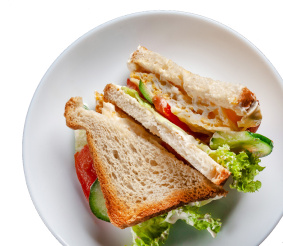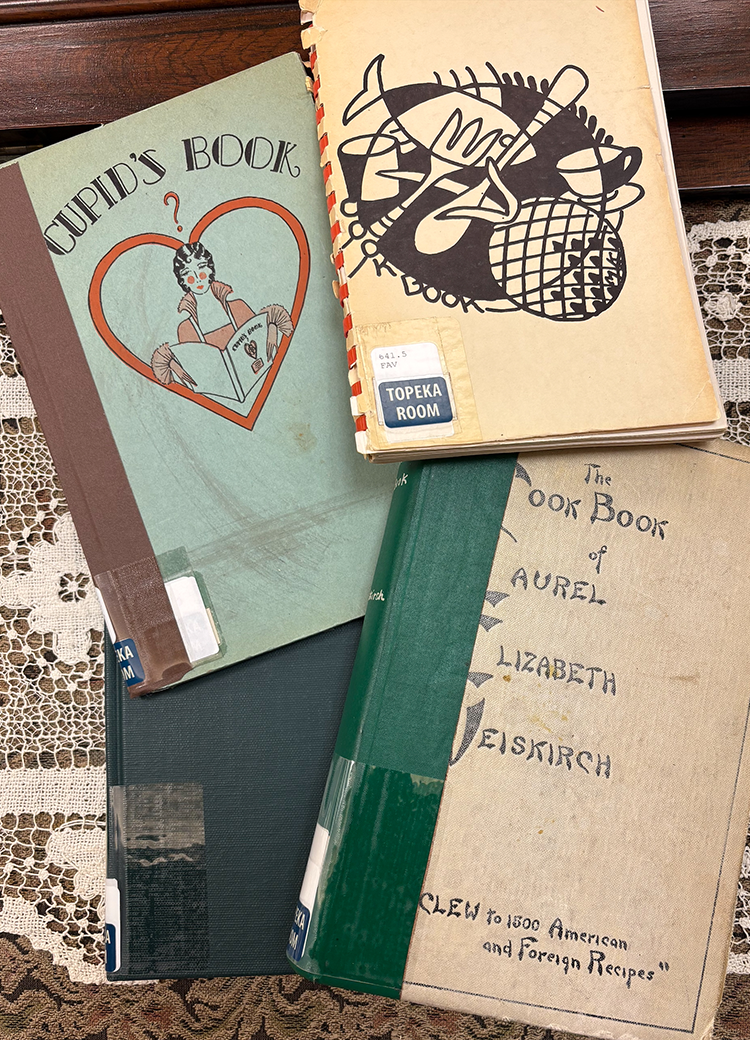More retro recipes from the Topeka Room
More retro recipes from the Topeka Room
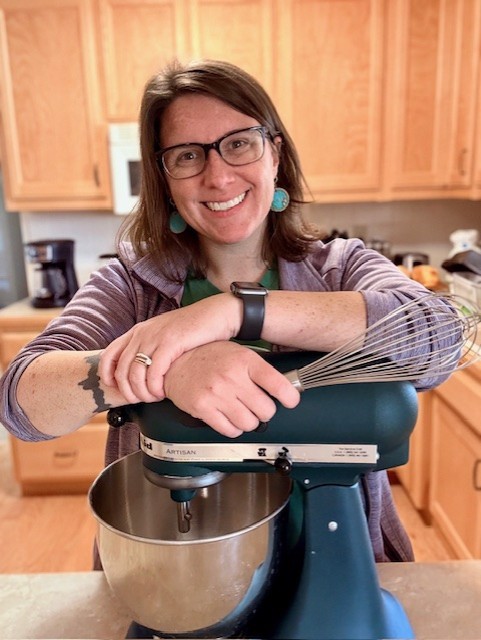 It’s once again the time of year when baking kicks into high gear, especially baking cookies. As an avid at-home baker, I am constantly on the lookout for interesting new recipes. Last year, I found some old new recipes and dipped into the various recipe books available in the library's Topeka Room. I had such fun with it (and my colleagues loved the excuse to eat cookies) so I tried a few more recipes from different historic cookbooks this holiday season!
It’s once again the time of year when baking kicks into high gear, especially baking cookies. As an avid at-home baker, I am constantly on the lookout for interesting new recipes. Last year, I found some old new recipes and dipped into the various recipe books available in the library's Topeka Room. I had such fun with it (and my colleagues loved the excuse to eat cookies) so I tried a few more recipes from different historic cookbooks this holiday season!
The following recipes are from between 1913 and 1952. As you will notice, the measurements and instructions sometimes are a bit vague (or, in one case, nonexistent!). Half of the adventure when baking these was hoping I had measured the ingredients correctly and added them in the correct order.
My intrepid colleagues were my taste testers. You can see what they thought of each recipe after the instructions.
Dust off your apron and your rolling pin, roll up your sleeves and join me for this year’s foray into retro baking!
Recipe #1 - “Cookies” (Mrs. W.S. Glover, Central Congregational Church Cook Book, 1913)

Ingredients I used
1 cup molasses
1 cup sugar
1 cup butter
2 teaspoon soda
1 cup hot water
1 egg
4.5 cups flour
1 teaspoon ginger
1 teaspoon cinnamon
1 teaspoon cloves
Baking
Let’s jump in with both feet and start with a recipe that not only has a serious mistake but also no directions! It also gets points for the vaguest name.
After doing a double take, I took a deep breath and re-read the ingredients. Obviously, the second set of baking soda and hot water is a misprint, so that’s one problem solved. A closer look reveals that the vaguely named “cookies” are ginger cookies.
The first thing I did was cream together the butter and sugar, then added in the molasses and beat until smooth. I dissolved the baking soda in the hot water and added that slowly to the mix. Finally, I added the egg and spices.
One thing that made me pause is there is no flour mentioned in the recipe. Sure enough, once I mixed all of the listed ingredients together, it was pretty much a Christmasy-smelling liquid. Remembering last year, there were a few recipes where they didn’t specify how much flour. These are from a time when most women would have assumed you’d know how to make a basic cookie.
I made an executive decision and began adding in flour a half cup at a time until I had mixed in about 4.5 cups of flour. By that point I had a nice sticky dough, so I popped it in the fridge to chill for 2 hours.
Once chilled, I scooped out tablespoon-sized balls of dough, rolled them and put them on a cookie sheet lined with parchment paper. I baked them at 350° F for 13 minutes.
Taste tester comments
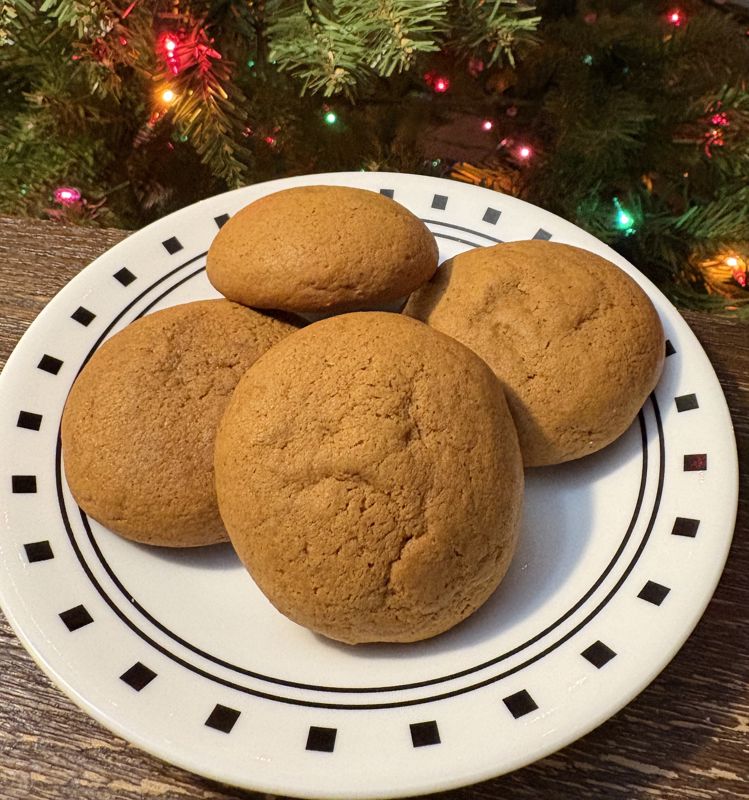
Recipe #2 - Aniseed Cookies (Laurel Elizabeth Weiskirch, The Clew Cook Book, 1930)
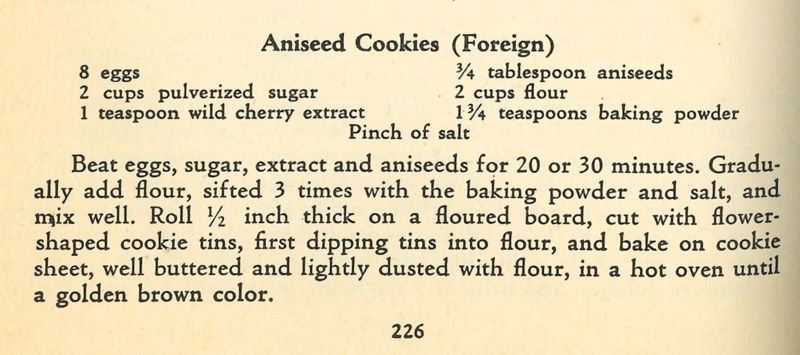
Ingredients I used
8 eggs
2 cups powdered sugar
1 teaspoon cherry flavoring
¾ Tablespoon anise seeds
4 cups flour
1¾ teaspoons baking powder
Pinch of salt
Baking
Half of the struggle with this recipe is simply finding the ingredients! I was able to get my hands on anise seeds, but the wild cherry extract proved elusive. Luckily, I found some cherry flavoring at a craft store in their candy making section.
When it came to baking, this recipe seemed pretty straightforward. I was a little leery of mixing for 20-30 minutes but thank goodness for the modern convenience of an electric stand mixer! Mixing the eggs, pulverized (powdered) sugar and flavor this long created a very light and fluffy mixture that almost tripled in size. After adding the rest of the dry ingredients, the mixture still did not appear thick enough to roll out, so I added an extra 2 cups of flour a quarter cup at a time. It was still very sticky and not ready to be rolled, so I chilled it in the fridge for 2 hours. Then I was able to scoop it out onto a heavily floured surface and roll it out.
I somehow did not have a flower-shaped cookie cutter in my stash, so I went with a basic circle. I then opted to use parchment paper to keep my cookies from sticking instead of a buttered and floured cookie sheet. This was done solely because cleaning up is my least favorite part of cooking.
This recipe calls for a “hot” oven, which most guides place at between 400° and 450° F. I played it safe with 400°. I watched them carefully, but they never got truly “golden brown.” The first batch I baked for 12 minutes but they came out a bit hard, so the rest of them I baked for 10 minutes and that seemed to work better.
Taste tester comments
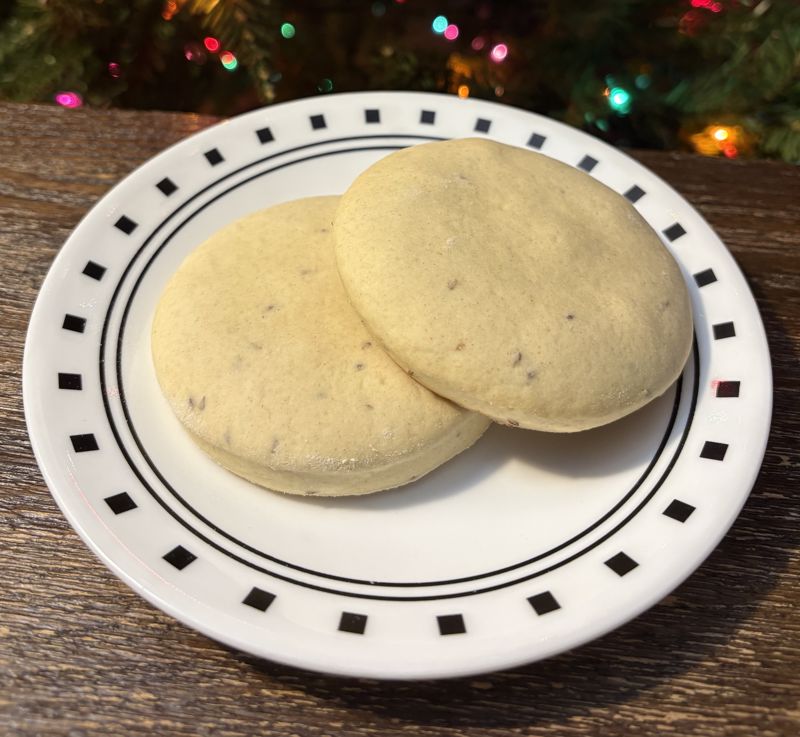
Recipe #3 – Sand Tarts (Ruth A. Stout, Favorite Recipes, 1952)
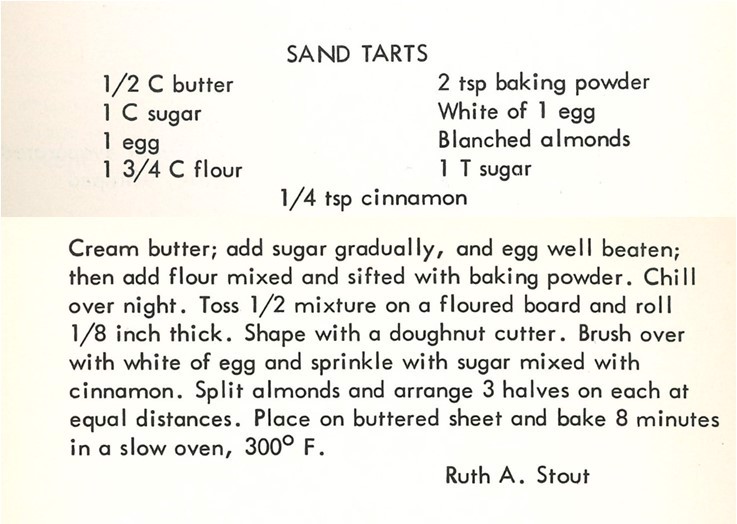
Ingredients I used
½ cup butter
1 cup sugar
1 egg
1 ¾ cup flour
2 teaspoons baking powder
White of 1 egg
Blanched almonds
1 tablespoon sugar
¼ teaspoon cinnamon
Baking
This recipe was the easiest of the four I chose for this year, probably because it's a more modern recipe. The dough itself is a basic sugar cookie, which I have plenty of experience making. One trick I’ve learned over the years is to shape my dough as flat as possible before chilling. This saves you from enduring an extreme arm workout when you start rolling it out once it’s cold. Your arms will still ache but not as badly!
Again, I used my basic circle cookie cutter, then brushed the egg white over the dough and sprinkled it with cinnamon sugar. If I were to make these again, I would probably double the amount of cinnamon and sugar. I was worried I’d run out so I couldn’t be as generous with that as I wanted to be. Finally, to give it the look of a sand dollar, I added my blanched almond pieces.
Following the instruction, I baked these at 300° F. I started at 8 minutes, but they still seemed a bit underdone, so I added an extra 3 minutes to my timer and that did the trick.
Taste testers comments
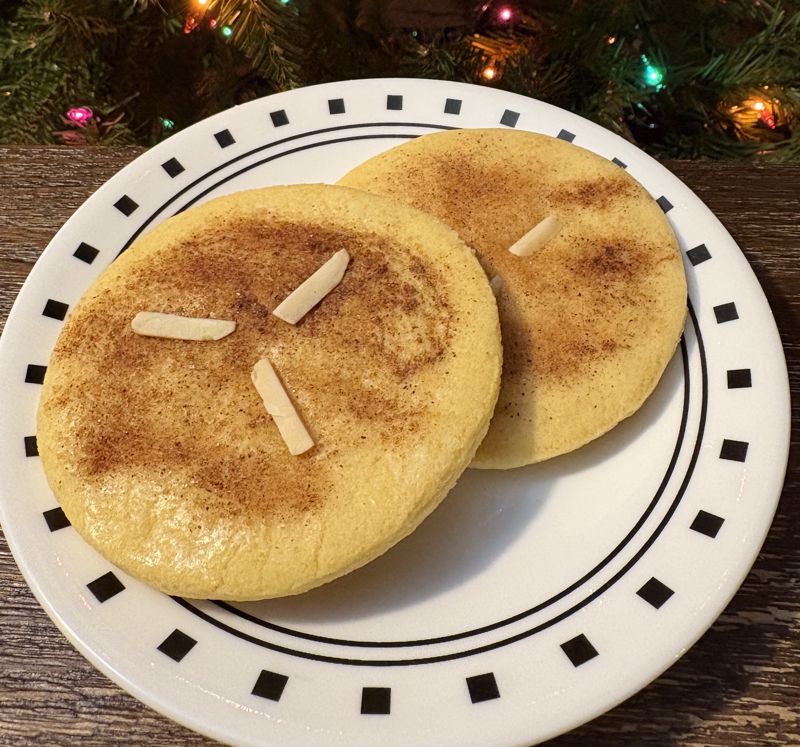
Recipe #4 – Turkish Delight (Cupid’s Book, 1929)
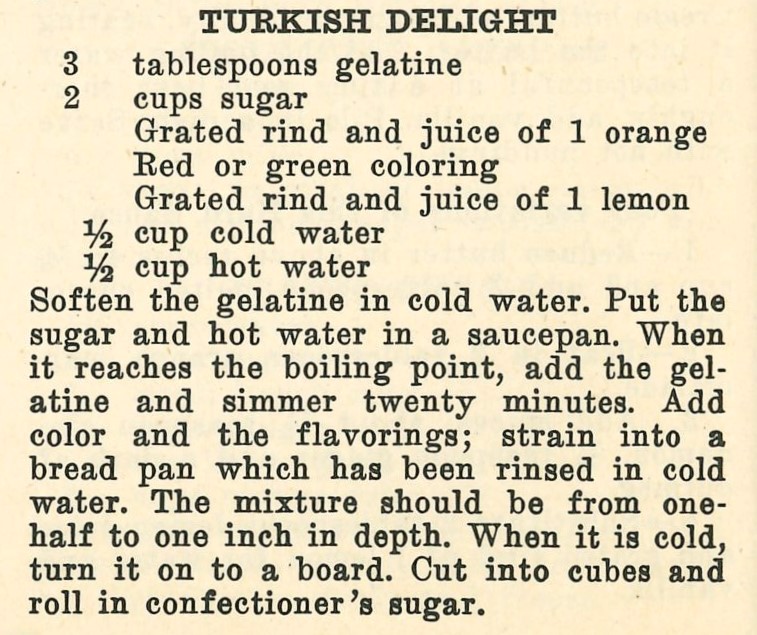
Ingredients I used
3 tablespoons gelatin
2 cups sugar
Grated rind and juice of 1 orange
Red or green coloring
Grated rind and juice of 1 lemon
½ cup cold water
½ cup hot water
powdered sugar
Baking
I know these aren’t technically cookies, but when I found this recipe in one of the cookbooks, I couldn’t resist! What book nerd hasn’t wanted to try the treat Edmund Pevensie sells out his siblings for in C.S. Lewis’s The Lion, the Witch and the Wardrobe?
While the instructions are straightforward, I did have some issues with my mixture boiling over. Pro tip: don’t underestimate the size of saucepan you need to use!
Once I had the ingredients mixed, I strained it into a bread loaf pan and let it set up in the fridge for 3 hours.
The recipe makes it sound like you should just be able to turn the pan upside down and the cold mixture should just slide on out, but that just didn’t happen. The mixture was incredibly sticky so I didn’t see how it would come out easily. Thankfully, I remembered that Jell-O molds, historically, were metal and the way to loosen those was to dip it in hot water. So, I boiled up some water in my tea kettle and poured it into a 9x13 pan. I dipped the bottom of my bread pan in the water just until I saw the sides of the gelatin mixture start to melt. Then I turned it upside down on a cutting board and it slid right out!
Now this stuff is STICKY! You can’t just cut it with a knife and roll it in the powdered sugar because it will stick to the knife, your fingers and itself. The first thing I did was dust the top of the Turkish delight with powdered sugar. This helped the knife not stick as I was cutting through it. If I do this again, I will also dust my cutting board with powdered sugar. Getting it off of the cutting board without powdered sugar to help was a pain. Just be prepared for everything to get sticky and to be covered in powdered sugar.
Taste testers comments
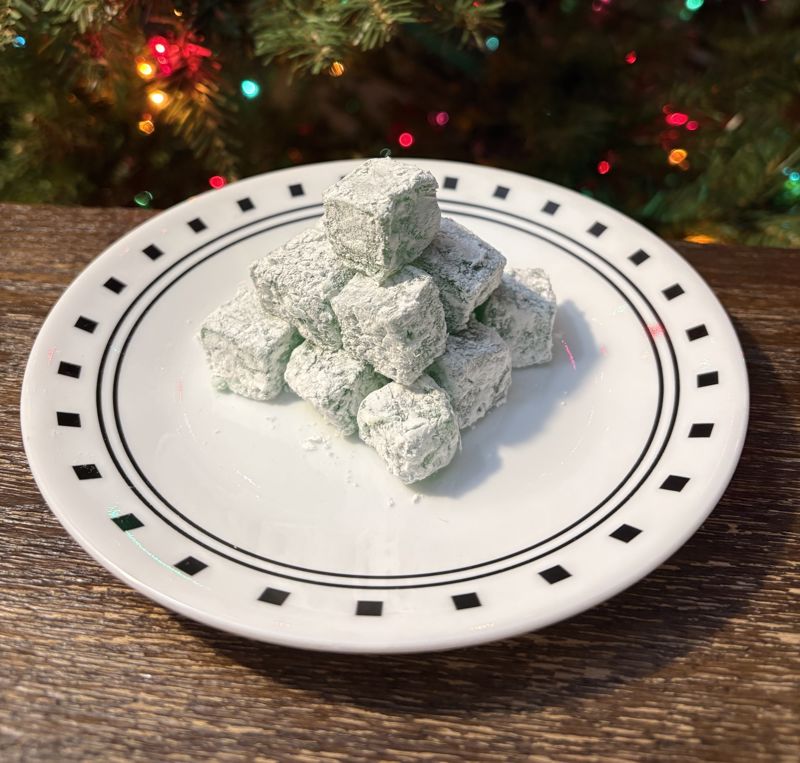
Get cooking
Hopefully, you’ve been inspired by some of these historic recipes. And if none of these four recipes float your boat, stop by the Topeka Room! We have several shelves dedicated to cookbooks from local organizations that go back to the 1910s.
If you want to know more about what we can learn from historic recipes, join me Fri, Dec 20 at 6pm in Marvin Auditorium C for Retro Recipes at the Holidays!
Happy cooking!






